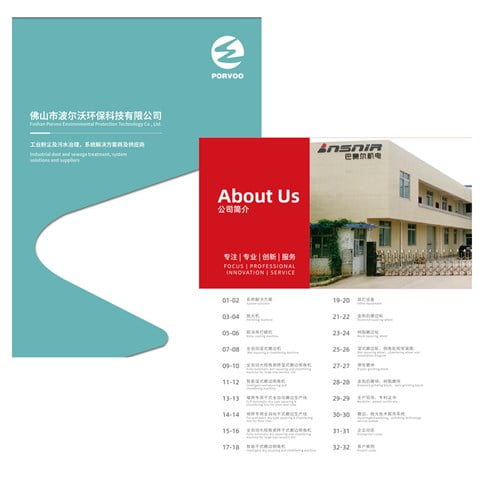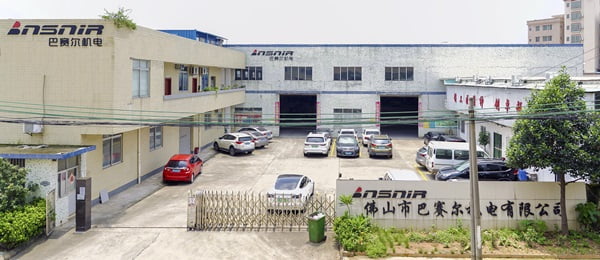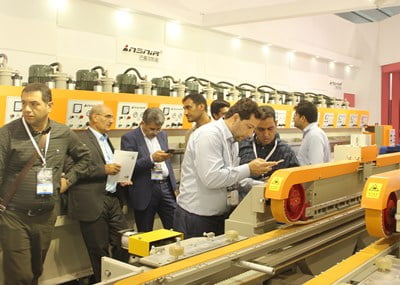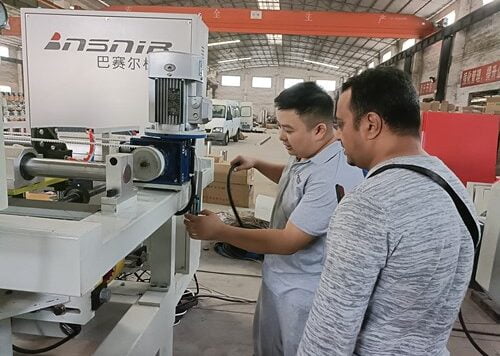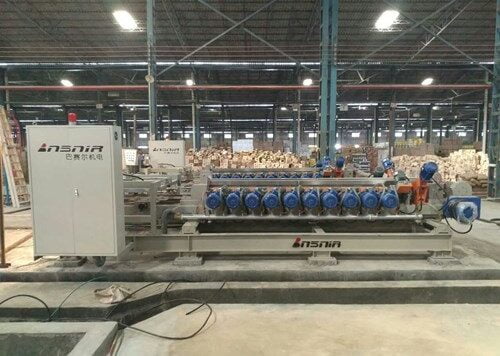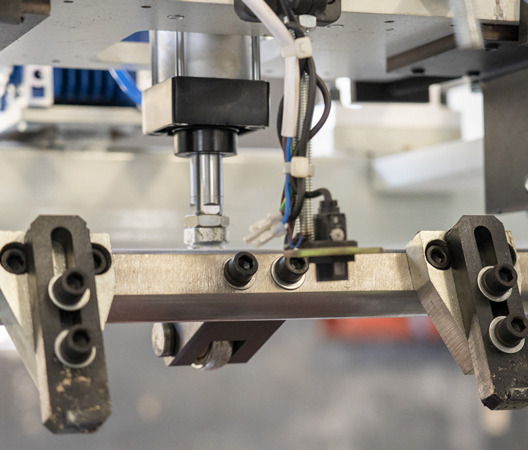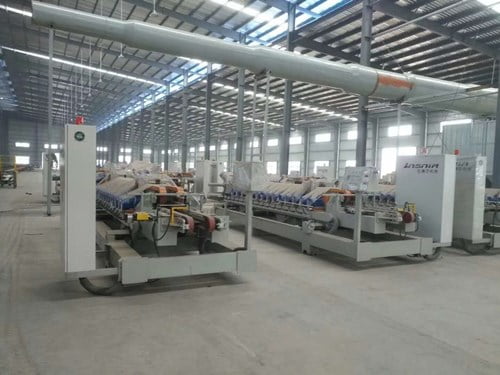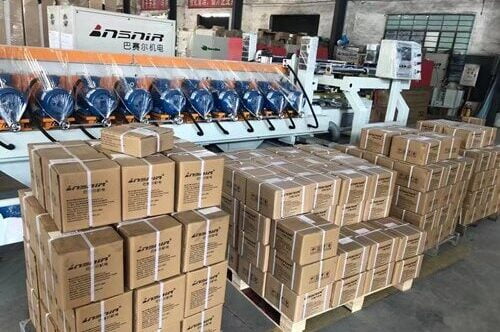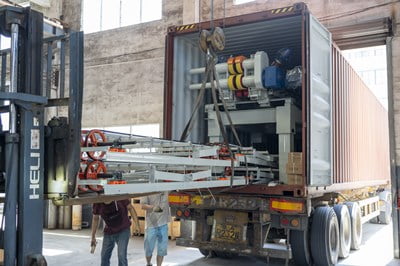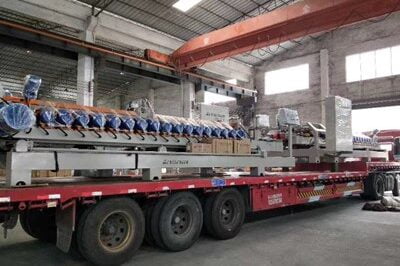The ceramic tile manufacturing industry faces unprecedented pressure to improve quality while reducing costs. XYZ Ceramics, a mid-sized manufacturer producing 50,000 square meters of ceramic tiles monthly, exemplifies how strategic equipment upgrades can transform operational efficiency. This case study reveals how one company achieved a 34% increase in production throughput while simultaneously improving surface quality ratings by 28%.
The challenge seemed insurmountable: aging polishing equipment was creating bottlenecks, quality inconsistencies were increasing customer complaints, and maintenance costs were spiraling upward. XYZ Ceramics needed a solution that would address multiple pain points simultaneously. Without intervention, the company projected a 15% decline in market competitiveness within eighteen months, potentially resulting in significant job losses and reduced profitability.
This comprehensive analysis examines the systematic approach XYZ Ceramics employed to revolutionize their tile polishing operations. Through detailed performance metrics, implementation strategies, and lessons learned, manufacturers facing similar challenges will discover actionable insights for their own transformation journey.
What Challenges Did XYZ Ceramics Face in Their Tile Polishing Operations?
XYZ Ceramics confronted a perfect storm of operational inefficiencies that threatened their market position. Their existing polishing line, installed in 2018, could no longer meet the demands of modern ceramic tile production standards.
Production Bottlenecks and Efficiency Issues
The primary challenge centered on throughput limitations. The facility’s three-station polishing system processed only 2,800 square meters per day, operating at 67% of theoretical capacity. Equipment downtime averaged 18 hours weekly, primarily due to abrasive head replacements and calibration issues.
Quality inconsistencies plagued the operation. Surface gloss measurements varied by up to 15 GU (Gloss Units) across individual tiles, resulting in visible variations that customers found unacceptable. Rejection rates reached 8.3%, significantly above the industry benchmark of 3.2%.
Maintenance and Operational Costs
Maintenance expenses consumed 23% of operational budget, with abrasive consumption alone costing $47,000 monthly. The aging equipment required specialized technicians for repairs, creating dependency on external service providers and extending downtime periods.
As production manager Maria Rodriguez observed, “We were caught in a cycle where fixing one problem created two others. The equipment couldn’t maintain consistent pressure across the polishing heads, leading to uneven surface treatment and increased material waste.”
| Challenge Category | Impact Metrics | Industry Benchmark |
|---|---|---|
| Daily Throughput | 2,800 m²/day | 4,200 m²/day |
| Rejection Rate | 8.3% | 3.2% |
| Weekly Downtime | 18 hours | 8 hours |
| Maintenance Costs | 23% of budget | 12% of budget |
How Did XYZ Ceramics Identify the Right Solution for Performance Improvement?
The transformation began with comprehensive operational assessment and technology evaluation. XYZ Ceramics partnered with BASAIR Tech to analyze their specific requirements and identify optimal solutions.
Technical Requirements Analysis
Engineering teams conducted detailed studies of product specifications, production volumes, and quality standards. The analysis revealed that surface finish requirements had evolved significantly since their original equipment installation, necessitating upgraded polishing capabilities.
Key requirements included achieving consistent 85-95 GU gloss levels across all tile formats, processing mixed product batches without extensive changeover times, and reducing abrasive consumption by at least 25%.
Solution Evaluation Process
Multiple polishing technologies were evaluated, including traditional multi-head systems, continuous polishing lines, and hybrid configurations. The evaluation criteria encompassed initial investment, operational efficiency, maintenance requirements, and scalability potential.
According to ceramic industry consultant Dr. James Chen, “Modern line polishing systems offer significant advantages over traditional station-based equipment. The continuous process eliminates transfer-related defects while providing superior surface uniformity.”
Technology Selection Rationale
XYZ Ceramics ultimately selected an advanced line polishing machine for ceramic tile production based on its ability to address multiple challenges simultaneously. The system’s modular design allowed for future expansion, while integrated automation reduced labor requirements and improved consistency.
What Real-World Applications Were Implemented in the Transformation?
The implementation phase required careful coordination to minimize production disruption while ensuring successful technology integration. XYZ Ceramics adopted a phased approach, replacing equipment during scheduled maintenance windows.
Equipment Installation and Integration
The new line polishing system featured twelve polishing heads with independent pressure control, enabling precise surface treatment across varying tile thicknesses and materials. Automated abrasive feed systems reduced manual intervention while ensuring consistent polishing compound application.
Integration with existing conveyor systems required custom interface development. The engineering team designed buffer zones to accommodate speed variations between production stages, maintaining continuous flow without material accumulation.
Process Optimization Implementation
Operational parameters underwent extensive optimization during commissioning. Polishing speeds, pressure settings, and abrasive grades were calibrated for each product category, creating standardized recipes that operators could easily implement.
Quality control integration included real-time surface monitoring using laser-based gloss measurement systems. Automatic feedback loops adjusted polishing parameters when surface quality deviated from specifications, maintaining consistent output without operator intervention.
Staff Training and Change Management
Comprehensive training programs prepared operators for new equipment capabilities. The curriculum covered technical operation, preventive maintenance procedures, and troubleshooting protocols. Training duration totaled 120 hours per operator, distributed over six weeks to allow practical application reinforcement.
How Did the New System Deliver Measurable Performance Improvement?
Performance improvements exceeded initial projections across multiple operational metrics. The transformation delivered quantifiable benefits within three months of full implementation.
Production Throughput Enhancement
Daily production capacity increased from 2,800 to 4,100 square meters, representing a 46% improvement. The continuous line configuration eliminated transfer delays and reduced handling-related damage. Processing time per square meter decreased from 12.8 to 8.7 minutes.
Peak production days achieved 4,350 square meters, demonstrating system capability beyond normal operating parameters. This surge capacity proved valuable during high-demand periods and allowed for accelerated order fulfillment.
Quality Improvement Metrics
Surface quality consistency improved dramatically, with gloss variation reduced to ±2 GU across tile batches. Customer complaint rates decreased by 67%, while product grading shifted toward premium categories. First-pass acceptance rates increased from 91.7% to 97.8%.
Dimensional accuracy improvements complemented surface quality gains. Thickness variation decreased to ±0.3mm, well within architectural specification requirements. Edge quality scores increased by 23%, reducing downstream processing requirements.
| Performance Metric | Before Implementation | After Implementation | Improvement |
|---|---|---|---|
| Daily Production | 2,800 m² | 4,100 m² | +46% |
| Gloss Consistency | ±15 GU | ±2 GU | +87% |
| Rejection Rate | 8.3% | 2.2% | +73% |
| Maintenance Costs | $47,000/month | $28,000/month | +40% |
Operational Cost Reduction
Maintenance expenses decreased significantly due to improved equipment reliability and automated systems. Abrasive consumption dropped by 31%, while energy efficiency improvements reduced power consumption by 18% per square meter processed.
Labor productivity increased as automated systems reduced manual intervention requirements. The same workforce now manages higher production volumes while maintaining superior quality standards.
What Success Stories Emerged from the Implementation?
The transformation generated multiple success stories that demonstrate the comprehensive impact of strategic equipment modernization.
Customer Satisfaction Improvement
Premium product sales increased by 28% as improved surface quality enabled XYZ Ceramics to compete in higher-value market segments. A major architectural customer extended their contract for three additional years, citing consistent quality and reliable delivery performance.
Regional distributor feedback highlighted the competitive advantage gained through superior surface finish consistency. Sales manager David Park noted, “Our customers notice the difference immediately. The uniform surface quality has become our signature characteristic in the marketplace.”
Workforce Development Success
Employee satisfaction improved as modern equipment reduced physical demands and skill requirements evolved toward technical operation. Three operators completed advanced certification programs, positioning them for supervisory roles as operations expanded.
Safety incident rates decreased by 52% due to automated handling systems and improved ergonomic design. The facility achieved 180 consecutive days without lost-time incidents, earning recognition from corporate safety leadership.
Environmental Impact Achievements
Water consumption decreased by 24% through closed-loop recycling systems integrated with the new polishing line. Waste generation dropped by 35%, contributing to corporate sustainability objectives and reducing disposal costs.
Energy efficiency improvements supported the facility’s carbon footprint reduction goals. The project contributed 12% of the site’s total energy savings target for the fiscal year.
What Industry Examples Can Other Manufacturers Learn From?
XYZ Ceramics’ transformation provides valuable insights for manufacturers considering similar upgrades. Several key principles emerge from their experience that apply broadly across ceramic production operations.
Scalable Implementation Strategies
The phased implementation approach proved crucial for maintaining production continuity. Other manufacturers can adapt this methodology by identifying natural production breaks and staging equipment installation accordingly.
Modular equipment selection facilitates future expansion without major system redesign. Companies experiencing growth should prioritize solutions that accommodate increasing capacity requirements over 5-7 year planning horizons.
Technology Integration Best Practices
Successful integration requires detailed interface planning between new and existing systems. Manufacturers should invest adequate time in engineering design to avoid costly modifications during installation.
Comprehensive operator training programs significantly impact implementation success. Companies achieves optimal results when training begins before equipment arrival and continues through the first production quarter.
Financial Planning Considerations
Return on investment calculations should include quality improvements and reduced maintenance costs alongside production increases. XYZ Ceramics achieved payback in 14 months, faster than the projected 18-month timeline.
Financing options can facilitate adoption for companies with budget constraints. Equipment suppliers often provide competitive financing terms that improve project economics.
What Challenges and Limitations Were Encountered During Implementation?
Despite overall success, XYZ Ceramics encountered several challenges that provide valuable lessons for other manufacturers considering similar projects.
Technical Integration Difficulties
Interfacing new polishing equipment with existing conveyor systems required custom engineering solutions not anticipated during initial planning. Resolution added six weeks to the implementation timeline and $23,000 in additional costs.
Electrical system upgrades became necessary to support increased power requirements. The facility’s electrical infrastructure, installed twelve years earlier, lacked adequate capacity for modern equipment demands.
Operational Transition Challenges
Operator adaptation to automated systems took longer than projected, particularly for employees with extensive experience on manual equipment. Some operators initially resisted procedural changes, requiring additional change management support.
Production scheduling complexity increased during the transition period as teams learned to optimize the new system’s capabilities. Coordination between production planning and operations required enhanced communication protocols.
Market Demand Fluctuations
Implementation coincided with unexpected market demand increases, creating pressure to accelerate commissioning timelines. While ultimately beneficial, the timing compressed optimization periods and required overtime labor costs.
Supply chain disruptions during the project affected abrasive material availability, necessitating alternative supplier development and inventory management adjustments.
How Can Other Manufacturers Replicate These Results?
Manufacturers seeking similar transformations can follow proven methodologies while adapting approaches to their specific operational requirements.
Assessment and Planning Framework
Begin with comprehensive operational assessment including production capacity analysis, quality measurement systems, and maintenance cost evaluation. Engage third-party consultants when internal expertise lacks specific equipment knowledge.
Develop clear performance objectives with measurable targets. XYZ Ceramics’ success resulted partly from specific, quantified goals that guided decision-making throughout the project lifecycle.
Implementation Strategy Development
Create detailed project timelines incorporating equipment delivery, installation, commissioning, and optimization phases. Allow adequate buffer time for unexpected challenges and system fine-tuning requirements.
Establish cross-functional project teams including operations, maintenance, quality control, and finance representatives. Regular communication and coordination prevent costly misalignments during implementation.
Technology Partnership Selection
Choose equipment suppliers with demonstrated expertise in ceramic tile production applications. Technical support capabilities and service response times significantly impact project success and long-term operational efficiency.
Consider advanced line polishing solutions that offer integrated automation and quality control capabilities. These systems provide superior consistency and reduced operational complexity compared to traditional approaches.
The ceramic tile manufacturing industry continues evolving toward higher automation levels and enhanced quality standards. Manufacturers investing in modern polishing technology position themselves advantageously for future market demands. XYZ Ceramics’ transformation demonstrates that strategic equipment modernization delivers measurable results across production efficiency, quality improvement, and cost reduction. Their experience provides a roadmap for other manufacturers seeking to revolutionize their operations through proven technological solutions.
What specific challenges does your facility face that might benefit from similar polishing line modernization? The path forward begins with honest assessment of current capabilities and clear vision for future operational excellence.
Frequently Asked Questions
Q: What is the main innovation highlighted in the Case Study: How XYZ Ceramics Revolutionized Tile Polishing?
A: The main innovation centers on XYZ Ceramics’ breakthrough in automated precision polishing technology, which dramatically enhanced the consistency, speed, and environmental sustainability of tile production. Unlike traditional methods, their system integrates advanced robotics and proprietary algorithms to deliver flawlessly polished tiles at scale, reducing waste and energy use while maintaining superior quality.
Q: Why did XYZ Ceramics focus on revolutionizing tile polishing in the Case Study: How XYZ Ceramics Revolutionized Tile Polishing?
A: XYZ Ceramics recognized that inconsistent tile finishes and high production costs were major pain points in the global ceramics industry. By focusing on tile polishing, they aimed to address these issues head-on, delivering a solution that not only improved product quality but also streamlined manufacturing, lowered costs, and positioned the company as an industry innovator.
Q: How exactly did XYZ Ceramics automate the tile polishing process in the Case Study: How XYZ Ceramics Revolutionized Tile Polishing?
A: XYZ Ceramics automated tile polishing by deploying a network of robotic arms equipped with smart sensors and AI-driven analytics. This system dynamically adjusts polishing pressure and speed based on real-time tile surface analysis, ensuring uniform results across batches. The process is monitored and optimized by cloud-based software, reducing the need for manual intervention and minimizing errors.
Q: What measurable benefits were achieved in the Case Study: How XYZ Ceramics Revolutionized Tile Polishing?
A: The measurable benefits are significant:
- Production efficiency: Output increased by 40% due to faster polishing cycles and reduced downtime.
- Quality control: Defect rates dropped to under 1% thanks to real-time monitoring and automated adjustments.
- Sustainability: Water usage was cut by 30%, and energy consumption fell by 25%, reflecting the system’s green credentials.
- Cost savings: Overall production costs decreased, giving XYZ Ceramics a competitive edge in pricing.
Q: Can the innovations from the Case Study: How XYZ Ceramics Revolutionized Tile Polishing be applied to other industries?
A: Yes, the core technologies—automation, AI-driven quality control, and sustainable manufacturing practices—have broad applications. Industries such as stone processing, glass manufacturing, and even semiconductor production could adapt similar systems to enhance precision, reduce waste, and improve operational efficiency. The principles of innovation and sustainability demonstrated by XYZ Ceramics are widely transferable.
Q: Where can I learn more about advanced tile polishing and other case studies in the ceramics industry?
A: For deeper insights into advanced tile polishing and related innovations, consider exploring industry journals, attending ceramics technology conferences, or following updates from leading manufacturers like XYZ Ceramics. Many companies now publish whitepapers or host webinars detailing their research and development milestones, offering valuable learning opportunities for professionals and enthusiasts alike.
External Resources
Polishing Process of Ceramic Tiles | PDF | Abrasive | Ductility – This document offers a detailed analysis of the polishing process for ceramic tiles, focusing on surface quality, tool wear, and the evolution of gloss and roughness, which are core aspects relevant to advanced tile finishing techniques.
Influence of Firing Temperature on Phase Composition and Color of Ceramic Materials – This peer-reviewed article discusses how ceramic tile attributes, including surface quality and color, are affected by firing temperatures, providing context for technical innovation in ceramic tile processes.
Glaze and Body Pigments and Stains in the Ceramic Tile Industry – This resource covers the use of pigments and stains in ceramic tile production, offering background on industry methods to achieve polished and decorative effects.
Tile Polishing Techniques and Innovations in the Ceramics Industry – An exploration of current tile polishing techniques and technological advancements in ceramics manufacturing that enhance final product quality.
Case Study: Lean Manufacturing in Tile Production – Presents a case study on process innovation within a tile manufacturing context, emphasizing quality control measures that could apply to tile polishing processes.
Surface Engineering Solutions for Modern Ceramic Tiles – Offers insights into the latest surface engineering strategies for improving the polishing and durability of ceramic tiles, directly relevant to process optimization and quality improvement.

